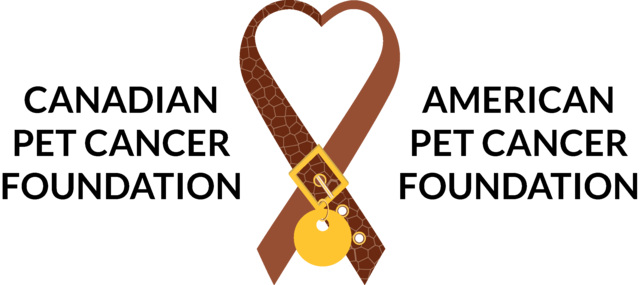- Genes That Cause Cancer
- Genes that cause cancer overview
- What are oncogenes?
- What are tumor suppressor genes?
- Oncogenes and tumor suppressor genes
GENES THAT CAUSE CANCER OVERVIEW
Cancer in animals can occur for several reasons. It may be due to environmental influences such as ultraviolet rays, chemical toxins, harmful viruses, or factors like genetics, hormones, age, and diet. Cancer may also occur spontaneously, and any of these elements can play a role in altering the genes in DNA, thus causing cancer. As your pet’s caretaker, reducing exposure to cancer-causing substances in your living environment is always essential to minimize cancer risk.
In typical living organisms, trillions of cells divide and multiply to form new cells that help the body grow or replace dead cells. The body controls this mechanism, so the cells don’t grow too much. In contrast, cancer cells will multiply uncontrollably. Cancer is a stepwise process made up of 3 primary phases:
- Initiation – any change in the DNA that leads to irreversible cell changes cells (mutations).
- Promotion – the abnormal cells multiply uncontrollably, forming tumor cells that have high survival
- Progression – cells form tumor masses and can lead to the spreading of the cancer cells to other parts of the body
Scientific findings indicate that there are about 100 genes that are responsible for causing cancer in dogs and cats. The two primary classes of genes that affect cancer development are oncogenes and tumor suppressor genes. Proto-oncogenes are the genes within a cell that help it grow and divide. An oncogene is when a proto-oncogene becomes mutated, leading to overactivation. Tumor suppressor genes are also normal, but their function is to control cell growth, slow cell division, or instruct cells to die. If mutations occur in tumor suppressor genes, the cells will stop dying, leading to uncontrolled growth and the formation of cancer cells.
Learning about the genetics behind cancer gives you, the pet owner, the knowledge to discuss your pet’s diagnosis with your vet more easily and discover what treatments are available for your pet’s particular kind of cancer.

The Pet Cancer Foundation’s Website Editorial team is comprised of veterinarians, veterinary oncologists, and veterinary technicians, as well as scientific writers and editors who have attained their PhD’s in the life sciences, along with general editors and research assistants. All content found in this section goes through an extensive process with multiple review stages, to ensure this extended resource provides pet families with the most up-to-date information publicly available.
The team listing of those contributing to the information on this page is here:
Keep Your Pets Healthy Editorial Team
Last Updated: October 2, 2022
The Pet Cancer Foundation’s medical resource for pet owners is protected by copyright.
For reprint requests, please see our Content Usage Policy.

The Pet Cancer Foundation’s Medical Illustration team is comprised of medical illustration specialists and graphic designers that work in consultation with our team of experts to create the medical art found throughout our website. Though not all medical concepts require the assistance of imagery, when a page does contain a medical illustration, credit to the artist and our medical art director will be noted here.
The Pet Cancer Foundation’s medical imagery is protected by copyright and cannot be used without prior approval that includes a mutually signed licensing agreement. Please review our Content Usage Policy.
The following sources were referenced to write the content on this page:
Blackadar, CB 2016, ‘Historical review of the causes of cancer’, World J Clin Oncol, vol. 7, no. 1, pp. 54-86.
Chial, H 2008, ‘Proto-oncogenes to oncogenes to cancer’, Nature Education, vol. 1, no. 1, p. 33.
Doherty A, Lopes, I, Ford, TC, Monaco, G, Guest, P, & Pedro de Magalhães, J, 2020, ‘A scan for genes associated with cancer mortality and longevity in pedigree dog breeds’, Mamm Genome, vol. 31, no. 7-8, pp. 215-227.
Patricia, A, Pesavento, PA, Agnew, D, Keel, MK, & Woolard, KD 2018, ‘Cancer in wildlife: patterns of emergence’, Nat Rev Cancer, vol. 18, no. 10, pp. 646–661.
Rakoff-Nahoum, S 2006, ‘Why cancer and inflammation?’, Yale J Biol Med, vol. 79, no. 3-4, pp. 123-130.
Stratton, MR, Campbell, PJ, & Futreal, PA 2009, ‘The cancer genome’, Nature, vol. 458, no. 7239, pp. 719-724.
Spandidos, DA 1985, ‘Mechanism of carcinogenesis: the role of oncogenes, transcriptional enhancers and growth factors’, Anticancer Res, vol. 5, no. 5, pp. 485-498.
Spandidos, DA 2007, ‘Oncogenes and tumor suppressor genes as paradigms in oncogenesis’ J BUON, vol. 12, no. Suppl1, pp. S9-S12.
Workman, P, Abaogye, EO, Balkwell, F, Balmain, A, Bruder, G, Chaplin, DJ, Double, JA, Everitt, J, Farningham, DAH, Glennie, MJ, Kelland LR, Robinson, V, Stratford, IJ, Tozer, GM, Watson, S, Wedge, SR, Eccles, SA & Committee of National Cancer Research 2010, ‘Guidelines for the welfare and use of animals in cancer research’, Br J Cancer, vol. 102, no. 11, pp.1555-1577.
The Pet Cancer Foundation’s medical resource for pet owners is protected by copyright.
For reprint requests, please see our Content Usage Policy.
